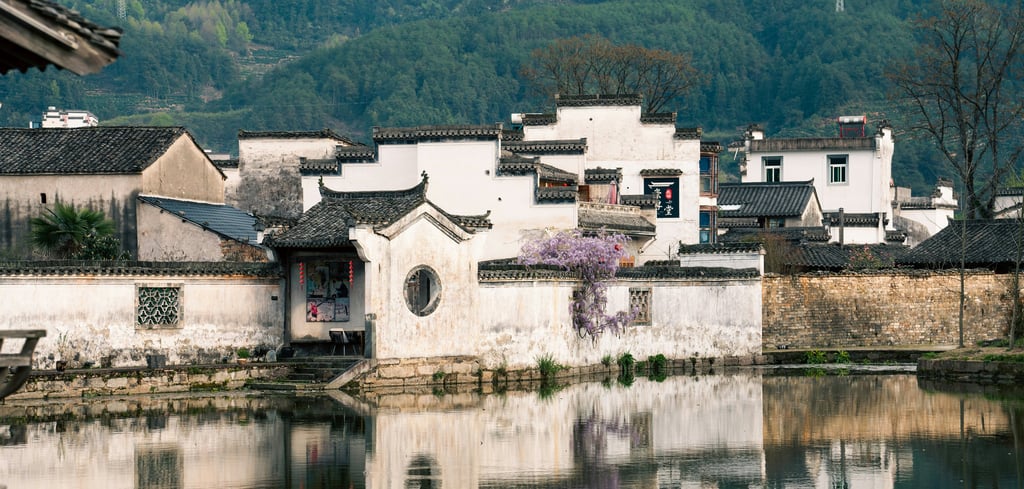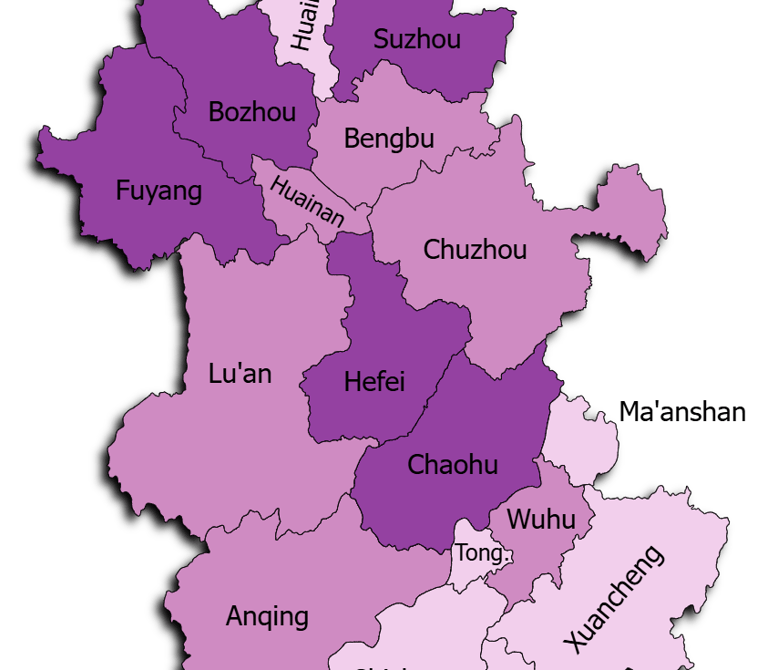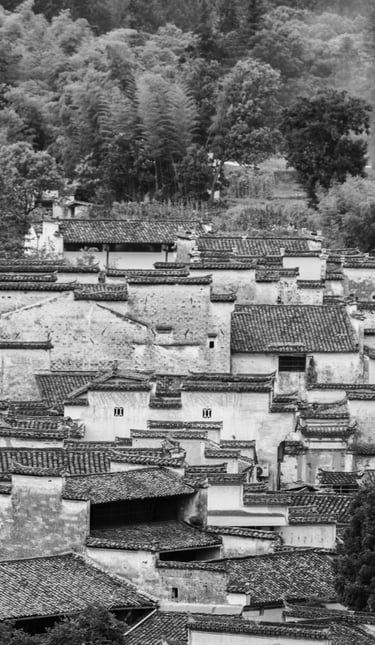Cities in Jiangxi


Introduction
Jiangxi is located in southeastern China, bordered by Hunan, Hubei, Anhui, Zhejiang, Fujian, and Guangdong. The province is characterized by mountain ranges, river basins, forests, and lakes, with the Gan River running through its center. Jiangxi is known for its revolutionary history, ceramics, natural scenery, and cultural heritage, as well as its role in early modern Chinese education.


Nanchang is located in central Jiangxi, on the Gan River plain. The city has a population of about 6 million and is the provincial capital. Nanchang is modern, dynamic, and closely linked to regional transportation and administration.
The city is known for its revolutionary history, especially the 1927 Nanchang Uprising, which plays a key role in modern Chinese political memory. Its economy includes electronics, manufacturing, optics, and aviation. Nanchang is also a regional education hub, home to Nanchang University and several research institutions. The city maintains historical monuments while expanding modern infrastructure along the Gan River, making it influential in Jiangxi’s development.
📍 Main places to visit include Tengwang Pavilion, Bayi Memorial Hall, Poyang Lake, Nanchang Star Ferris Wheel, Autumn Water Square.
Nanchang (南昌)
Jingdezhen (景德镇)
Jingdezhen is located in northeastern Jiangxi, near forested hills and river valleys. The city has a population of about 2 million and is around 200 km from Nanchang. Jingdezhen is known as a center of craftsmanship and artistic tradition.
This city is internationally recognized for its porcelain production, which dates back over 1,000 years. Jingdezhen porcelain became famous during imperial dynasties, and its kilns, museums, and artisan communities still attract researchers and designers. The economy centers on ceramics, cultural tourism, and creative industries, supported by institutions such as the Jingdezhen Ceramic University.
📍 Main places to visit include Imperial Kiln Museum, Ancient Kiln Folk Museum, Yaoli Ancient Town, Hutian Kiln Site, Ceramics Art Avenue.




Ganzhou is located in southern Jiangxi, surrounded by mountains and river valleys. The city has a population of about 9 million and is several hours south of Nanchang. Ganzhou is a regional center with deep historical and cultural layers.
Ganzhou is known for its role in Hakka culture, early Red Army history, and traditional architecture. The city’s economy includes rare earth resources, agriculture, electronics, and logistics, reflecting its strategic location connecting Jiangxi with Guangdong. Institutions such as Gannan Normal University support education and preserve regional cultural identity.
📍 Main places to visit include Yugu Platform, Hakka Walled Villages, Bajingtai Pavilion, Tongtianyan Scenic Area, Ganzhou Ancient City Wall.
Ganzhou (赣州)
Shangrao (上饶)
Shangrao sits in northeastern Jiangxi, surrounded by mountains and forests. The city has a population of about 6 million and stands as an important transportation junction.
Shangrao is known for its natural reserves, scenic mountains, and cultural heritage sites. Tourism plays a significant role in the local economy, supported by education institutions and regional development initiatives.
📍 Main places to visit include Sanqing Mountain, Wuyuan Historic Villages, Gexian Mountain, Shangrao History Museum.
Jiujiang (九江)
Jiujiang is in northern Jiangxi, along the Yangtze River and Poyang Lake. The city has a population of about 5 million and is roughly 120 km from Nanchang.
Jiujiang is known for its natural landscapes, river transportation, and nearby sacred mountains. It also has a long literary and cultural tradition, shaped by scholars and religious sites. The local economy includes logistics, tourism, and light manufacturing.
📍 Main places to visit include Mount Lushan, Donglin Temple, Poyang Lake Wetland, Jiujiang Museum.




Yingtan (鹰潭)
Yingtan is located in northeastern Jiangxi, near hills and river plains. The city has a population of about 1 million and is well connected to neighboring regions.
Yingtan is known for religious heritage and Taoist culture, especially linked to Mount Longhu, considered a sacred site. The local economy includes tourism, logistics, and metallurgy, giving the city both historical and industrial significance.
📍 Main places to visit include Mount Longhu, Shangqing Ancient Town, Yingtan Museum.
Fuzhou (抚州)
Fuzhou is in eastern Jiangxi, near hilly terrain and rivers. The city has a population of about 4 million and is about 90 km from Nanchang.
Fuzhou is known for its literary heritage, as it was home to many ancient scholars and poets. The local economy includes agriculture, textiles, and cultural tourism, and universities contribute to education and preservation efforts.
📍 Main places to visit include Linchuan Culture Park, Zhaoqing Temple, Local Opera Museum.




Navigation
Main Menu
nathan.china-sphere.com
© 2025. All rights reserved.